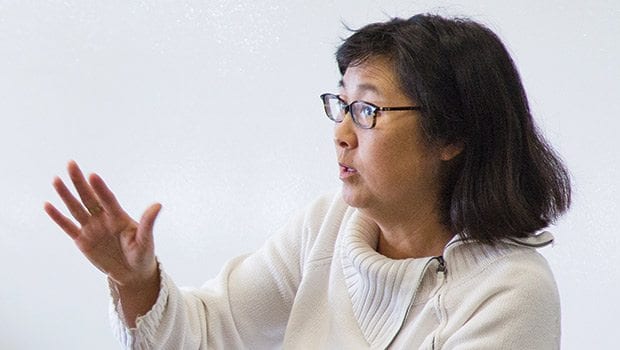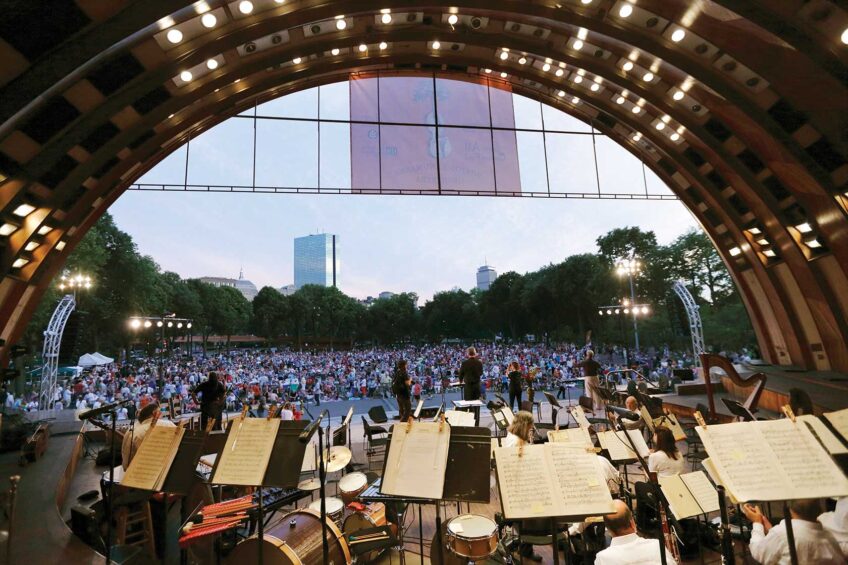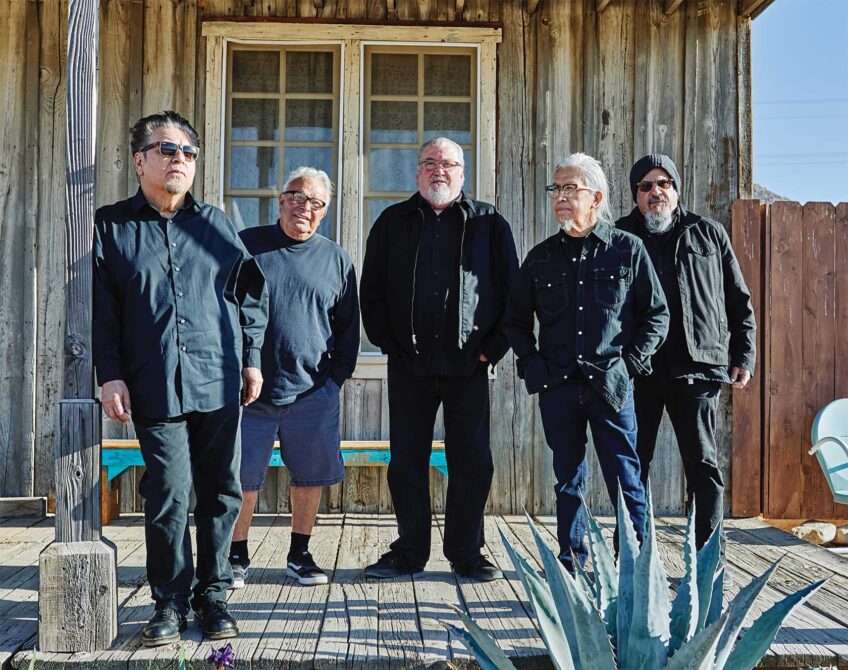Vietnam memorial artist to construct new project
Maya Lin’s work will focus on climate change

At age 21, Maya Lin, then a senior majoring in architecture at Yale, submitted the winning proposal for a memorial to Vietnam veterans in Washington, DC.
Completed in 1982, Lin’s Vietnam Veterans Memorial is a series of polished black granite slabs inscribed with the 57,661 names of Americans who died in Vietnam. At first, the simple, untraditional memorial was almost as controversial as the war itself. But it has become one of the most visited and beloved commemorative sites in the world.
A visitor searches for a loved one’s name, touches it, and, reflected in the wall’s glossy surface, becomes part of a memorial that marks both individual and cumulative loss.
Now, Lin, an award-winning architect and artist, is developing what she describes as her “last memorial.” Its goal: to reveal and reverse losses of species and habitats due to climate change.
Lin spoke of the project as well as the evolution of her career in a riveting lecture last Thursday afternoon at Boston University, where she was keynote speaker of the annual conference of the National Council of Arts Administrators.
Introducing Lin, Lynne Allen, dean ad interim of BU’s College of Fine Arts, said, “Her true medium is memory.”
Lin, a small, trim woman, stepped up to the podium and without fanfare began talking about her work, which she described as “a tripod” — art, architecture and memorials.
Lin’s raw materials are nature as well as memory, and she increasingly uses scientific data to guide the design of works that replicate unseen natural forces and landforms. She also relies on a host of co-workers, from geologists to metal fabricators and earthworks operators.
Projected on a large screen behind Lin was a photograph of sea waves, its grey tones heightening their angular shape, formed by wind and light.
Lin then showed an image of the same wave-like shapes translated into grassy slopes—a view of a land art project that evokes the interplay of ocean and earth during the glacial age. One of the largest in this series is at the Storm King Art Center, a vast sculpture park in the Hudson River Valley.
Lin displayed a photograph of the “sympathetic crew” of construction workers who were using trucks to adjust the waves in her installation, created out of landfill in a gravel pit formed during construction of the New York State Thruway.
Most of Lin’s projects invite visitor participation. In some of her wave series installations, said Lin, “You can nestle into a grassy incline and read a book.”
Showing slides at a brisk pace as she spoke about her projects, Lin also worked in a bit of autobiography.

Author: Photo courtesy of Michelle Leland/SPLCMaya Lin’s Civil Rights Memorial for the Southern Poverty Law Center, Montgomery, Alabama.
Lin started young with her inquisitiveness, can-do spirit, and taste for earthy materials. “I am my father’s daughter,” said Lin, 56, describing how at age three she would work in clay and then as a teenager in bronze.
Lin’s father, Henry Lin started the ceramics program at Ohio University and later became dean of its Fine Arts College. He was raised in China in a Japanese-style house with a Zen aesthetic that infuses Lin’s projects. This sensibility orders the elements within a composition—whether it is an image or a garden—to engage the viewer’s contemplation. Water is often a presence, even if only through shapes or lines suggesting its movement.
Lin’s mother, Julia Chang Lin, was a scholar of Chinese literature, and Lin frequently incorporates words into her projects. As a Yale undergraduate, she studied math, English and science with equal zeal. In architecture, she saw a way to combine all three.
Lin’s 1989 Civil Rights Memorial for the Southern Poverty Law Center in Montgomery, Alabama is a flat circular stone sculpture engraved with political and legislative milestones as well as the names of martyrs in the struggle for civil rights. A sheet of water flows over the stone and a quotation of Rev. Martin Luther King, Jr.: “We shall not be satisfied until justice flows like waters and righteousness like a mighty stream.”
Economy of design comes natural to Lin, who favors “underutilized spaces” and recycled materials.
She restored a 1860s barn and its corncribs to create the Langston Hughes Library (1999) in Clinton, Tennessee, a 1200-square-foot reading room with a collection of research materials on civil rights.
Nature’s art
Geology is another raw material for Lin, who collaborates with scientists to develop works that show overlooked or unseen elements of nature.
One series of works applies topographic data to render sculptures of landforms below sea level. “Where the Land Meets the Sea” (2008), suspended like a cloud outside the California Academy of Sciences in San Francisco, recreates the contours of the earth below San Francisco Bay. Meshing land and water data sets, the structure of stainless steel wires is like a three-dimensional line drawing. Lin said, “I want to get you to think about what’s below the surface.”
Another sculpture recreates the contours of the entire Yangtze River in recycled silver.
Such works draws viewers into seeing nature in new ways. “Kids really look,” said Lin, while adults, who believe they know their world, “stop looking.”
Several of Lin’s recent projects are nearby. Her Newport memorial to heiress and philanthropist Doris Duke, “The Meeting House” (2013), displays quotations from ordinary colonial era residents, injecting an intimate sense of history into stately Queen Anne Square. Lin said, “My goal is to bring you back to a moment in time.”
Geologic time moves far more slowly than human years, and visitors encounter a reminder of its silent progress when they arrive at Brown University’s Building for Environmental Research and Teaching in Providence. At its entrance is Lin’s “Under the Laurentide” (2015), a granite sculpture of the Narragansett Bay seafloor that takes its name from the Laurentide Ice Sheet that once covered most of North America.
On Massachusetts Ave. in Cambridge, the Novartis life sciences research campus is sprouting up, designed by Lin to combine a main building clad in glass, terra cotta and New England granite with street-level retail shops and a small park.
Lin concluded her lecture by showing how she is using the power of art, coupled with science, as a force of change.
Introducing “Confluence,” a multi-year project in the Pacific Northwest that has resulted in both art and ecological restoration along the Columbia River Basin, Lin said, “Art can look at problems slightly differently—out of the box.” Following the itinerary of the Lewis and Clark expedition from 1804 to 1805, the six-site project began in 2006, at the mouth of the Columbia, where her site redesign restored a view of the sea formerly blocked by a parking lot.
Lin then introduced a project that she calls her “last memorial.” Since 2009, Lin has been building a multi-faceted campaign to confront and reverse the destruction of what has been her source—nature.
Core to the project, which she described as “a global memorial to the planet,” is a web site http://www.whatismissing.net/. Visitors can create a self-guided tour by location or timeframe and follow the past, present and future of biodiversity. Inviting all to become involved as co-creators of the site, Lin also spoke of the small things each person can do in daily life to “balance our needs with the needs of the planet.”
The home page resembles a solar system with its expanse of multicolored dots on a black field. Each is a story in text or video that documents habitat degradation or instead, chronicles an example of restoration, granting life rather than loss the last word.






